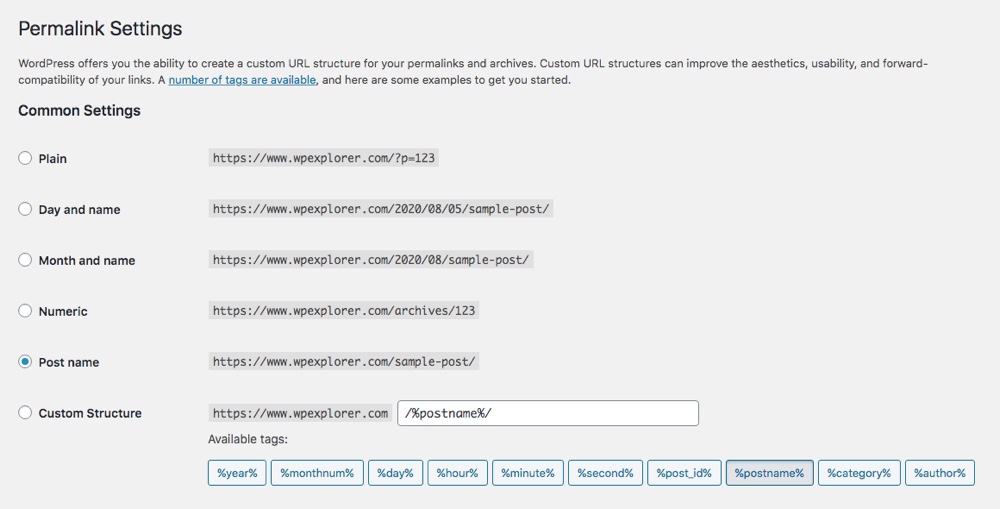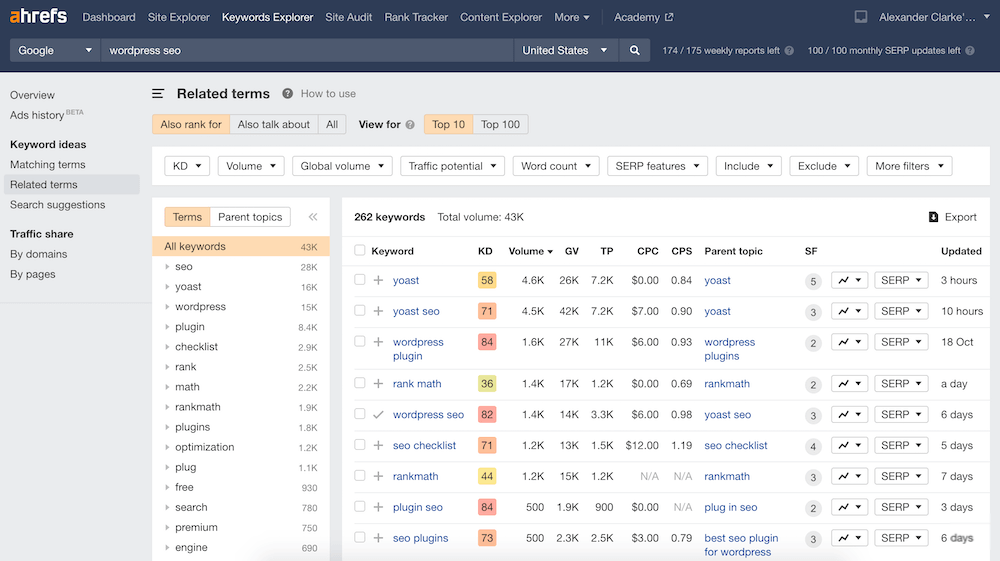How to Setup WordPress Site Structure for SEO?
When building a website, the temptation to add content right away can be substantial. But, you must have a solid website structure before making a WordPress website or redesigning the current one.
A well-planned structure is what turns a messy set of web pages into a site loved by users and search engines. For both, getting a clear idea of how your website is organized and how to find relevant information is crucial.
This year, 41.4% of all websites use WordPress, while 64.9% of Content Management Software is on the platform. As a result, there are thousands of themes, plugins, and designs you can use to create a WordPress website.
Today, we’ll look at crucial steps you can take to create a good, SEO-friendly website structure while developing your WordPress website.
Why Does WordPress Website Structure Matter?
The structure of your website is crucial for its usability and findability. A clear structure guides your visitors to the information they’re looking for. It also gives Google and other search engines a better understanding of your website, which is incredibly important for ranking.
How is Website Structure Important for Usability?
Your WordPress website structure affects the user experience (UX) significantly. If visitors can easily find the products or information they’re looking for, they’re likely to stick around or become regular visitors. To reduce your sites’ bounce rate, make navigating easy by categorizing and linking your posts and products.
Site Structure & Technical SEO
It’s also important for technical SEO. As we’ve seen, a solid structure significantly improves your chances of ranking in search engines. Here’s why:
It helps search bots ‘understand’ your site – The structure of your site gives search engines vital clues on where the most valuable content on your site is. Search engine bots like Googlebot can find and index your content faster, leading to a higher ranking on SERPs.
You’ll avoid the effects of competing content on your website – if you have lots of content that are pretty similar, site structure or sitemaps help tell Google which page is the most important and prevent you from competing with your own content.
Overall, a little planning as you set up your WordPress website helps your visitors navigate and grow your website effortlessly.
Prepare the Groundwork
To ensure all the basics are covered, here are several steps you can take:
Step 1: Choose Your Domain Name
A domain name is your business name or your product name. For domain name choosing, you can brainstorm or use a business naming site such as Novanym or Namelix. Use relevant keywords for your business name to give the naming tools ideas.
Once you choose your domain name, check if the website domain is available and buy it via your hosting provider. You can also buy it via a domain register like GoDaddy.
Step 2: Prepare to Visually Map your Website
A visual foundation for your website structure is a great starting point. Even if you’re using a paid theme or a team of designers, a visual structure acts as a compass. The map may include:
Header navigation menu – Also known as the main navigation menu, it gives visitors a snapshot of your website and grants access to the most popular content on your website.
Sidebar navigation – Found mostly on blogs and e-commerce sites, it provides additional search capabilities to visitors. You can add the sidebar navigation if you need extra real estate and additional filters to sort your products.
Footer Navigation – The menu at the bottom of your website. You may use it to repeat the items at the header navigation or add less popular content, such as your terms and conditions.
Pages – Static areas that don’t need constant updates like services, “About Us,” or “Contact Us.” You may tuck child pages under the primary/parent pages if you have a lot of services.
Blog categories – This makes it easier to organize similar content. Your audience finds the content quicker, and as we’ve seen, it improves your search efforts.
A tool like Xmind can help you map a simple structure to act as a roadmap for your website.
Step 3: Look at Your Competitors’ Websites
You may need to identify how your competitors have organized the information on their sites. Check how many sections they have and how they connect. Evaluate these sites from a user’s perspective.
Identify which of your competitors’ pages shows the most outstanding result in search. You can research further on its structure and the keywords used.
Search engine competitive research will help you determine what you need to include in your website.
Establish A Goal for Your Website
Your goals will help you to decide the design and structure for your site and help you measure its success. Goals can be an extension of your business goals, especially if your business is purely online. They may include:
Identifying your target audience.
How to organize and prioritize your web content.
How to create the right content for your audience
Measuring the effectiveness of your website
Choose an SEO Friendly Theme
One of the most significant unique selling points of WordPress is that it supports themes. Themes are convertible designs that allow you to change the appearance of your website with just one click. Using a well-coded, SEO-friendly theme is important as the developer builds key elements of your site structure into the theme.
With over 30,000 free WordPress themes to choose from, and even more premium options, choosing a theme may be one of the biggest challenges of building your WordPress website.
To begin with, look at the official theme directory at WordPress.org, which may be rather plain. If you’re looking to impress and appeal to your website visitors, consider a custom WordPress theme.
Total Theme gives you excellent theme options, allowing you to create a stunning website quicker. You can use their ready-made demos or create your website from scratch. Their WordPress theme comes with a page builder, enabling you to customize your preferred option further.
Create A Permalink Structure That Follows Your Hierarchy

Permalinks are the full URLs of your individual web pages that users and search engines interact with when navigating your website.
Permalinks give people and search engines an idea of what information your posts and pages contain.
Choosing the correct permalink structure for your site is important. For example, at WPExplorer we like using the post name for our permalinks but for sites that release daily or time-relevant content using the date in their permalinks might make more sense.
Since Google considers URLs a ranking factor, the permalinks you use and the structure you adopt are key SEO signals.
WordPress provides you with multiple permalink options. To view them on your website, visit the Settings > Permalinks page. You can also change the main permalink structure and customize the individual URLs of pages, blogs, categories, and other areas within your website.
WordPress SEO plugins like Yoast can also help you create unique custom permalinks for specific sections of your site in case you need to override the default WordPress settings.
Categorize Your Pages
A category informs search engines what your page is about and helps readers find the exact content they need on your site. WordPress allows you to group your pages and posts. For every post you write, you can group it with similar posts under a particular category.
Keyword research helps you to refine and complete your site structure. To begin with, use search volume and organic potential to assign top keywords to the pages at the top of your hierarchy.
Here’s how you can use keyword research to categorize your pages:
Classify your keywords to form a content hierarchy – This helps you filter your keywords into groups with related meanings. You can choose the keyword in each category and assign it to the main page and then create hierarchies and subcategories.
Select the main keywords for the top-level pages – With the help of your data or competitor analysis, target the most suitable keywords possible. Most good, premium SEO tools like ahrefs or Semrush include a Keywords Explorer which is a user-friendly way to categorize your keywords. If you aren’t ready to invest much, you can also try a free option like Jaaxy (the starter plan is limited but completely free) or Moz (which has a 30-day free trial).

Open the top-level pages to deeper levels. Not all top-level pages need subsequent pages. But, you can create subtopics for category pages such as blog and product categories.
Add Tags
Tags help define and differentiate data, providing a better description of your page. Avoid using broad descriptions or the exact keywords in your page categories when creating tags. Instead, go for a very specific keyword that shows why the particular page is unique.
“Think of your categories as the chapters in a book, and the tags as the index.” – Scott Frangos. CMO, Web Direction.
Here are the most relevant tags you can consider.
Title tags – Also called the meta title, this is displayed above your page description in SERPs. Title tags play a crucial SEO role because they describe the type of content the reader expects to find. The more detailed your title tags are, the better your SEO results. In WordPress, your post or page Title is used unless you have a third-party SEO plugin installed, in which case you may have options to customize your meta title and description.
Header tags – They separate sections of your content and establish hierarchies. They follow the order of Heading 1(H1), Heading 2(H2) down to Heading 6(H6). They don’t appear in SERPs but are important in calculating page rank.
Blog post tags – They are not part of HTML but are a way of further organizing your blog posts within your Content Management System (CMS). Think of them as more specific categories (here’s a WordPress categories and tags guide that explains further).
Get SEO Plugins to Extend Your Website’s Capabilities
SEO WordPress plugins allow you to expand and stretch the functionality of your WordPress website. You may even view them as an SEO booster for your site.

For example, Yoast SEO is a popular SEO plugin that incorporates many functionalities. You can use the plugin to create SEO-friendly titles and unique misdescriptions and optimize your content for readability and SEO. Yoast can also be used to add an XML sitemap to your WordPress website, which is how search engines are able to view and understand your site structure.

All-in-One SEO (AIOSEO) is another WordPress SEO that can help you add meta tags, generate XML sitemaps, optimize social sharing, add schema markup, and much more.
WordPress SEO plugins are easy to use and for the most part offer similar features. They come with a friendly interface that blends easily into the WordPress dashboard. They help you extend your site’s SEO functionality and boost your ranking performance.
You can get a plugin for all the essential functions of your website, from adding contact forms, increasing page speed or even creating an online store.
Building a WordPress website structure should not just be about sections, links, and plugins – it’s about user experience! Put in the time and resources and create an SEO-friendly structure as the foundation of your website.
Find out what your competitors are doing, analyze your keywords in-depth, and categorize your web pages based on keyword research data. Once your site is set, conduct a site audit to check your site structure from a technical angle. Google Search Console can also help you identify how Google bots see your pages.
If you already have a WordPress site, analyze your site structure. You may find some weaknesses that need addressing to boost your ranking and improve the user experience.

